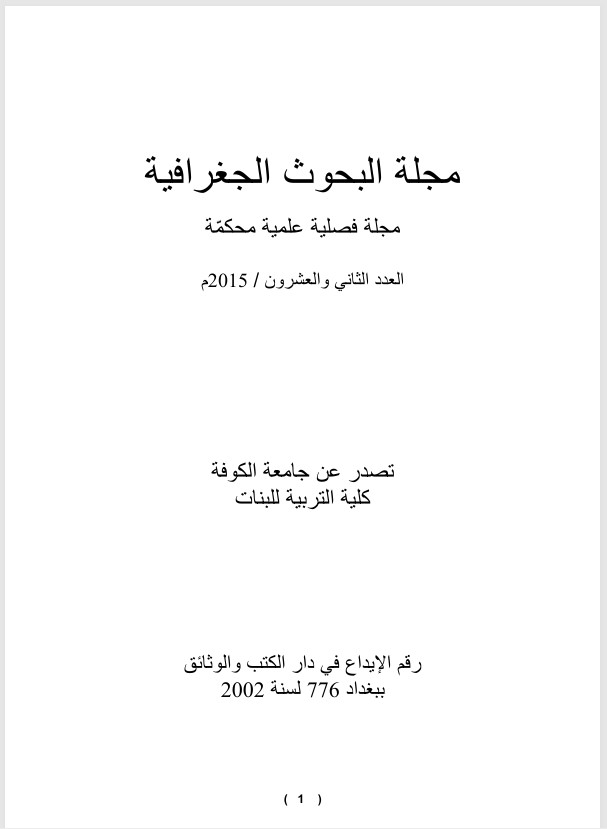Abstract
The present study focuses on hydrological changes of the lower Euphrates , which is considered as an important water supply for different economic demands . The results indicate a great changes , due to the effect of the upper irrigation projects , storages , climate changes , drainage and sewage . As a result , the river discharge at Husaiba of Iraq decreased form 28 billion cubic meters ( bcm ) during ( 1950 – 1970 ) to 12 bcm at ( 2000 – 2013 ) . It falls to 2.8 bcm ( 2000 – 2013 ) at Nasriya compared with 14.4 at ( 1950 – 1978 ) . Also , water quality has been affected at Nasriya ( 2008 0 2013 ) as the average EC , Ca , Mg , Na , Cl , So4 , Hco3 , and TDS are raised to 3.4 dececemins / m , 210 , 187 , 217 , 534 , 702 , 176 and 2018 mg/ L respectively .
1. Most of these values are considered unsuitable for irrigation , drinking and environment . Therefore , the river is damed after Chibaiyish and diverted to Hamer marsh in 2010 .
2. The decreasing discharge reduce Hamar marsh area to 76% . Also , soil is affected by salinity to 70 – 75 % . The above factores reduce agriculture production form cereals to 0.6 Ton / h . Moreover , palm trees number along the Euphrates and shatt al Arab fall form 8.5 millions in 1958 to 1.6 million at 2012 with low production of 13 kg / palm .
3. Thus , Several measures should be considered in order to promote water quantity and quality , such as , water allocation agreement , controlling of drainage water , sewage , appling effective irrigation methods , adopting salty resisting crops , utilizing of desert groundwater , intensive water monitoring networks , support of water research , training and cooperation with international organizations .

